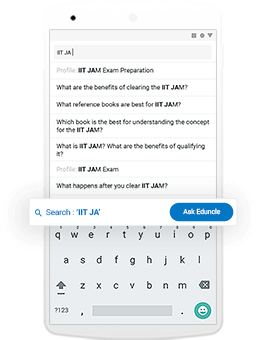Time management is very much important in IIT JAM. The eduncle test series for IIT JAM Mathematical Statistics helped me a lot in this portion. I am very thankful to the test series I bought from eduncle.
Nilanjan Bhowmick AIR 3, CSIR NET (Earth Science)- CSIR NET
- Life Sciences
The binding of ligands to many gpcrs leads to decrease in concentration of second messengers.how it is possible? .instead of increasing the secondary
The binding of ligands to many GPCRs leads to decrease in concentration of secondary messengers.How it is possible? .Instead of increasing the secondary messengers,it does the opposite reaction ! ? Why ?
- 1 Likes
- 1 Comments
- 0 Shares
-
![comment-profile-img]() >
>
Do You Want Better RANK in Your Exam?
Start Your Preparations with Eduncle’s FREE Study Material
- Updated Syllabus, Paper Pattern & Full Exam Details
- Sample Theory of Most Important Topic
- Model Test Paper with Detailed Solutions
- Last 5 Years Question Papers & Answers
Sign Up to Download FREE Study Material Worth Rs. 500/-











 >
>







Krishan k jakhad![best-answer]()
Second messengers are small molecules and ions that relay signals received by cell-surface receptors to effector proteins. They include a wide variety of chemical species and have diverse properties that allow them to signal within membranes (e.g., hydrophobic molecules such as lipids and lipid derivatives), within the cytosol (e.g., polar molecules such as nucleotides and ions), or between the two (e.g., gases and free radicals). Second messengers are typically present at low concentrations in resting cells and can be rapidly produced or released when cells are stimulated. GPCR includes a transmembrane receptor and an intracellular G-protein, which is activated (GDP replaced with GTP) owing to a conformation change that occurs with ligand binding or mechanical stimulation. GPCRs are single polypeptides composed of seven transmembrane-spanning segments. In general, Transmitter binding produces conformational changes in the receptor that expose parts of the i3 region, among others, for binding to G proteins. G protein binding increases the affinity of the receptor for transmitter. Desensitization is common among GPCRs and leads to decreased response of the receptor to neurotransmitter by several distinct mechanisms. However, the binding of any single particular agonist may also initiate activation of multiple different G-proteins, as it may be capable of stabilizing more than one conformation of the GPCR's GEF domain, even over the course of a single interaction. In addition, a conformation that preferably activates one isoform of Gα may activate another if the preferred is less available. Furthermore, feedback pathways may result in receptor modifications (e.g., phosphorylation) that alter the G-protein preference. now coming to ur question since everything within a cell is regulated tightly... Cyclic AMP-dependent protein kinases (protein kinase A) are activated by the signal chain coming from the G protein (that was activated by the receptor) via adenylate cyclase and cyclic AMP (cAMP). In a feedback mechanism, these activated kinases phosphorylate the receptor. In β2-adrenoceptors, this phosphorylation results in the switching of the coupling from the Gs class of G-protein to the Gi class.cAMP-dependent PKA mediated phosphorylation can cause heterologous desensitisation.
Thanks for such an explanation